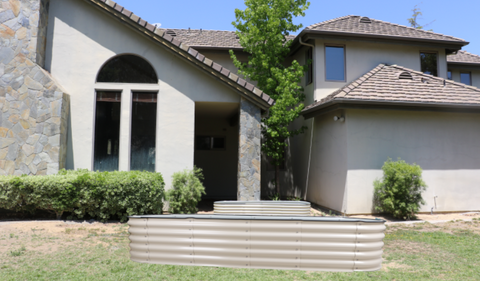10 Tips for Successful Garden Beds Gardening
The traditional underground garden is great, but the garden beds garden also has something to say - it allows you to plant more food in a smaller space, customize the soil precisely according to your needs, and reduce the space for weeds to grow wild. In addition, the soil in the garden bed warms earlier in spring than in the underground garden bed, so you can start planting faster. They allow you to garden without fighting stones and roots, and the soil in them can be easily modified every season. With the increase of low tunnels, elevated beds also help prolong the frost threatening season.
Of course, garden beds gardens also have some disadvantages. In hot and dry weather, they tend to dry quickly. Stray cats may find beautiful, fluffy soil attractive because they have their own reasons. In addition, when building a garden bed, you need to consider the width of the raised bed to ensure that you can easily reach the center when planting or maintaining the garden.

Don't walk on the soil
The greatest advantage of garden bed gardening is that you can create light, fluffy and absolutely perfect soil. When you build garden beds, build them so that you can reach every part of the bed without standing inside. If you already have a garden bed and find you have to walk on some beds, consider installing strategically placed patio pavers or planks and stepping only on these rather than on the soil.
Cover after planting
After planting the garden, cover it with straw, grass chips, leaves or wood chips. This will reduce the amount of weed you have to do and keep the soil moist.
Plan your irrigation system
Soaking hose and drip irrigation are two best ways to irrigate garden beds. If you plan ahead and install the irrigation system before planting, you can save a lot of work and time to stand with hoses later.
Install root and weed barriers
If you have large trees in the area, keep the garden bed away from its shadows and roots. Most vegetables like enough or at least part of the sun to produce a good harvest. If you want to ensure that you do not have to deal with weeds that grow through perfect soil, consider installing a barrier under the bed. This could be a commercial weed barrier or thick corrugated cardboard.
If you have an existing garden bed and find that you are struggling with tree roots every year, you may need to dig the soil and place the garden bed in a better position. If the vole finds your garden attractive, try adding hardware cloth to the bottom and inner edge of the garden bed, and then fill it with soil. The metal mesh barrier will make it almost impossible for burrowing creatures to enter the bed from below, where they eat the roots of plants.

Top dressing with compost every year
In essence, gardening on a garden bed is like gardening in a very, very large container. As with any container garden, the soil settles and runs out over time. You can alleviate this by adding 1 to 2 inches of compost or compost fertilizer each spring before planting begins.
Loosen the soil as needed
To reduce the compacted soil in the garden bed between seasons, simply insert the garden fork into the soil as deep as possible and swing it back and forth. Do this on the entire bed at 8 to 12 inch intervals, and your soil will be well loosened without a lot of heavy work.
Cover your soil, even if you're not gardening
Add a layer of organic mulch or plant mulch crops at the end of the growing season. Soil exposed to severe winter weather decomposes and compacts much faster than protected soil. In addition, you can increase soil fertility by adding mulch crops, because the crops will decompose when they become soil.
Annual covering crops
Annual mulch crops planted at the end of the growing season, such as annual ryegrass, crimson clover and vetch, can benefit your raised garden bed garden. They provide nutrients for the soil, especially if you dig them into the bed in spring to reduce erosion. If it is wild peas and clover, it can fix nitrogen in the soil.

Create a beautiful, edible garden.
Even the simplest raised garden bed can become a beautiful destination in the garden. Plan a beautiful arrangement of your favorite foods, match them with beautiful blooming companion plants, to attract beneficial insects to the garden, you can create a living art - and improve your harvest. By adding flowers at the edge of the raised garden bed, pollinators will be attracted to the flowers - also helping to pollinate your crop to increase yield. In addition, beneficial predatory insects will also like flowers - but will also help to compress pests in the garden.
Consider extending the season in advance
Plan ahead to let you grow earlier in the season or extend the growing season to autumn. Consider installing supports for simple low tunnels or cold racks. When you need to protect crops from frost, your workload will be minimal.
